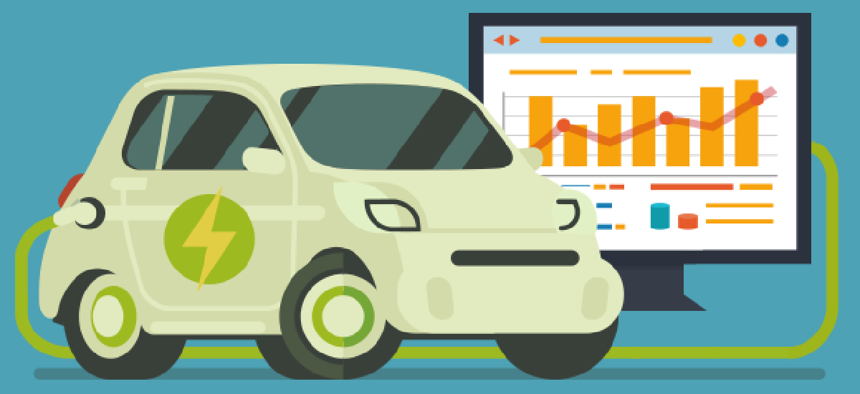Can data fuel electric vehicle growth?


Connecting state and local government leaders
Experts in the EV community discussed how data can help spur the technology’s adoption at the first-ever Electric Vehicle Datathon.
A corner room in the Eisenhower Executive Office Building was taken over on Nov. 29 by data scientists, city planners and electric vehicle manufacturers and advocates. The goal of the gathering was to discuss what data is needed to advance deployment of EVs. Researchers from the national laboratories described the data they have on EVs and directed those in attendance to find what was missing.
The brainstorming and networking opportunity for people in the EV space was dubbed the first-ever “Electric Vehicle Datathon.” Hosted by the White House Domestic Policy Council and Office of Science and Technology Policy, the event represented a nod to an initiative that has to date not delivered on expectations.
In his first term, President Barack Obama said the United States could get 1 million EVs on the road by 2015. In January 2016, Energy Secretary Ernest Moniz said it might take another four years to get there if gas prices remain low and battery technology doesn’t improve.
Sales aren’t close to ideal, the Department of Energy's Michael Berube said. Sales of EVs made up about 2.1 percent of auto sales in the country last year. That number can grow, the director of the Vehicle Technologies Office said, but right now they’re just too expensive. That won’t continue to be the norm, he predicted: “I do believe that cost will come down.”
Along with making EVs less expensive, the industry also has to wrestle with consumer confidence issues. Buyers want to know that the EV’s range is sufficient and charging infrastructure is easily accessible. Addressing these concerns will better batteries, more chargers on nation’s highways and better communication about the improvements. The tool to tackle these barriers, Berube said, is data.
And right now there is no shortage of data.
Earlier this month the Department of Transportation unveiled a number of different EV corridors with public charging stations located every 50 miles along the interstate and no more than five miles from the off-ramp. So travelers making their way through North Carolina can take I-40 from Hickey to Raleigh -- a 175 mile trip -- and know they can charge along the way.
Argonne National Laboratory has public data on EV fuel economy and detailed numbers on where energy is spent within a car, vital information for improving efficiency. On-road and lab testing data can be found through the Idaho National Laboratory along with information on charging infrastructure. And a multitude of surveys on driver habits have been compiled and posted online by the National Renewable Energy Laboratory.
Generally speaking, data itself is not the problem. “Having data is one thing, the key is knowing what to do with it,” said John Smart, a group lead for advanced vehicles research at the Idaho National Laboratory.
For Thea Walsh with the Mid-Ohio Regional Planning Commission, however, the problem is also the data that’s not yet available. She told Datathon attendees that her organization’s transportation plan incorporates data on travel trends, parking surveys, land use, census data and other information.
But more needs to be known, she said, and not just about EVs, but about autonomous vehicles. How will they affect parking needs? How will they affect roadway measurements? These projects have not yet generated actionable data. Other missing data points concern the capacity of the electric grid and the population’s changing demographics, she said.
The areas around Columbus, for example, are expected to grow by 500,000 people in coming years, which likely means an increase in multiunit dwellings like apartments. “For us to break into the consumer market we’re going to need to get into multiunit dwellings,” she said. “Multiunit dwellings just aren’t set up for electric vehicle charging.”
As yet, there aren’t any follow-ups to the datathon planned. Contact information and notes on the discussions will be shared with attendees, but a plan for creating this still-needed data isn’t in place.
President-elect Donald Trump, meanwhile, announced his pick for the Transportation secretary earlier this week. The appointee, Elaine L. Chao, has worked in the George W. Bush and Ronald Reagan White House. She was the deputy transportation secretary for the former. But it’s unclear whether Chao will continue to back the EV initiative of her predecessor, Anthony Foxx, who has said that data will be the key to the smart-city future.
“Nostalgia is not data based,” he said earlier this year. “We have to believe our data.”
NEXT STORY: 3-D, high-res maps of the last frontier




